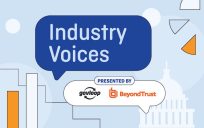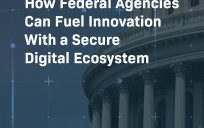This blog post is an excerpt from GovLoop’s recent guide, Mapping Government’s Journey to the Cloud: 8 Success Stories. The guide includes interviews with federal, state and local officials who have overcome common barriers to cloud adoption, including procurement and security. Download the full guide here to get their insights and tips for success.
The early years of cloud adoption in government were marked by curiosity and skepticism about delivering secure IT-as-a-Service, but time has proved that cloud has enormous potential to improve government service delivery. Agencies are discovering they can simplify their IT, and improve back-office business functions like procurement and HR, while often reducing costs. The first step to starting your cloud journey is to ask three questions:
- Why do we want to move to the cloud?
- What functions do we want to move?
- How do we make the change?
Why Cloud?
Many assume cost savings is the main driver, but the biggest benefit of cloud is the pace of innovation, said Sarah Jackson, Group Vice President, Sales Consulting, Public Sector Applications at Oracle. “We are rolling out enhancements every six to 12 months. The demands of our government customers are changing and increasing more rapidly than ever. Intuitive design, social collaboration, policy automation and mobile capabilities are no longer nice to have; they are fundamental for agile, modern, effective service delivery.”
The cost savings with cloud services is really how much the cloud service provider (CSP) does in ongoing operations, so this makes Software-as-a-Service (SaaS) much more valuable than Infrastructure-as-a-Service (IaaS). Jackson noted that organizations already spend a lot of time maintaining major applications—particularly those that run core government operations like HCM, financials and citizen relationship apps. For these functions, moving to a SaaS model can offer dramatic savings.
Likewise, Platform-as-a-Service (PaaS) is more valuable than IaaS because it transfers more maintenance costs to the CSP, but the advantages of PaaS and IaaS can transcend pure cost, said Mark Johnson, Director of Modern Platform for Government at Oracle. He added that the flexibility of being able to create new virtual machine environments at any time and nearly any scale is powerful — almost as powerful as deleting those environments when no longer needed to save money. PaaS and IaaS can also be part of an overall agency strategy to reduce IT administration by outsourcing data center and hardware operations.
Which Cloud?
Agencies will easily recognize the allure of most SaaS applications. SaaS allows them to stay current on software without hefty upgrades and leverage modern technologies for agile program execution. Employees and citizens win with intuitive, mobile interfaces while agencies deliver secure, scalable applications. Adopting a cloud “mindset” is critical for agencies to be successful in this transition. They must embrace industry best practices delivered by the service, eliminating existing customizations while receiving two to three software updates each year.
For functions that can’t move to SaaS, an agency should look to PaaS next and see what functions it can leverage from the CSP. Specific advantages of PaaS include helping developers spend less time on maintenance and more time adding value to the organization.
Another decision to be considered is whether to use a public cloud (owned by the CSP and offering limited services) or a private cloud, which may be owned by either the CSP or the agency, but offers complete control to your agency. Efficient private clouds not only beat public cloud economics after two to three years, but they also provide many intangible benefits, including allowing you to decide what security to implement, how to deploy services, when to patch and more. If you need to save money in a tight budget year, then you can defer a hardware refresh in a private cloud, but not in a public cloud.
The Road to Cloud
As you create a cloud roadmap, consider both incremental and longer-term transitions. Not every application has to move at the same time, but while you are in transition, it’s important to consider how to integrate applications and data across this hybrid environment. Choosing cloud technologies that use open standards for integration and even the same underlying technologies will simplify many integration challenges, Jackson said. The ability to personalize and extend SaaS applications is also a critical consideration for governments moving to the cloud.
For sensitive data in the cloud there are certification programs like HIPAA, CJIS and FedRAMP — but not every system or environment moving to the cloud needs these certifications, Johnson said. For training or basic development, you shouldn’t use sensitive data, so why pay a premium for a certified cloud? Use the lowest-cost cloud for development or trials of new services, and then migrate the solution to another secure location for final test and production.
The cloud offers governments an unprecedented opportunity to modernize services and execute more effectively and efficiently on their mission. The best approach to when and how to transition to the cloud varies for each organization, which is why Oracle allows customers to personalize their roadmap. Oracle offers public sector customers the breadth of software, platform and infrastructure cloud services based on nearly 40 years of experience committed to serving the public sector community.






Leave a Reply
You must be logged in to post a comment.